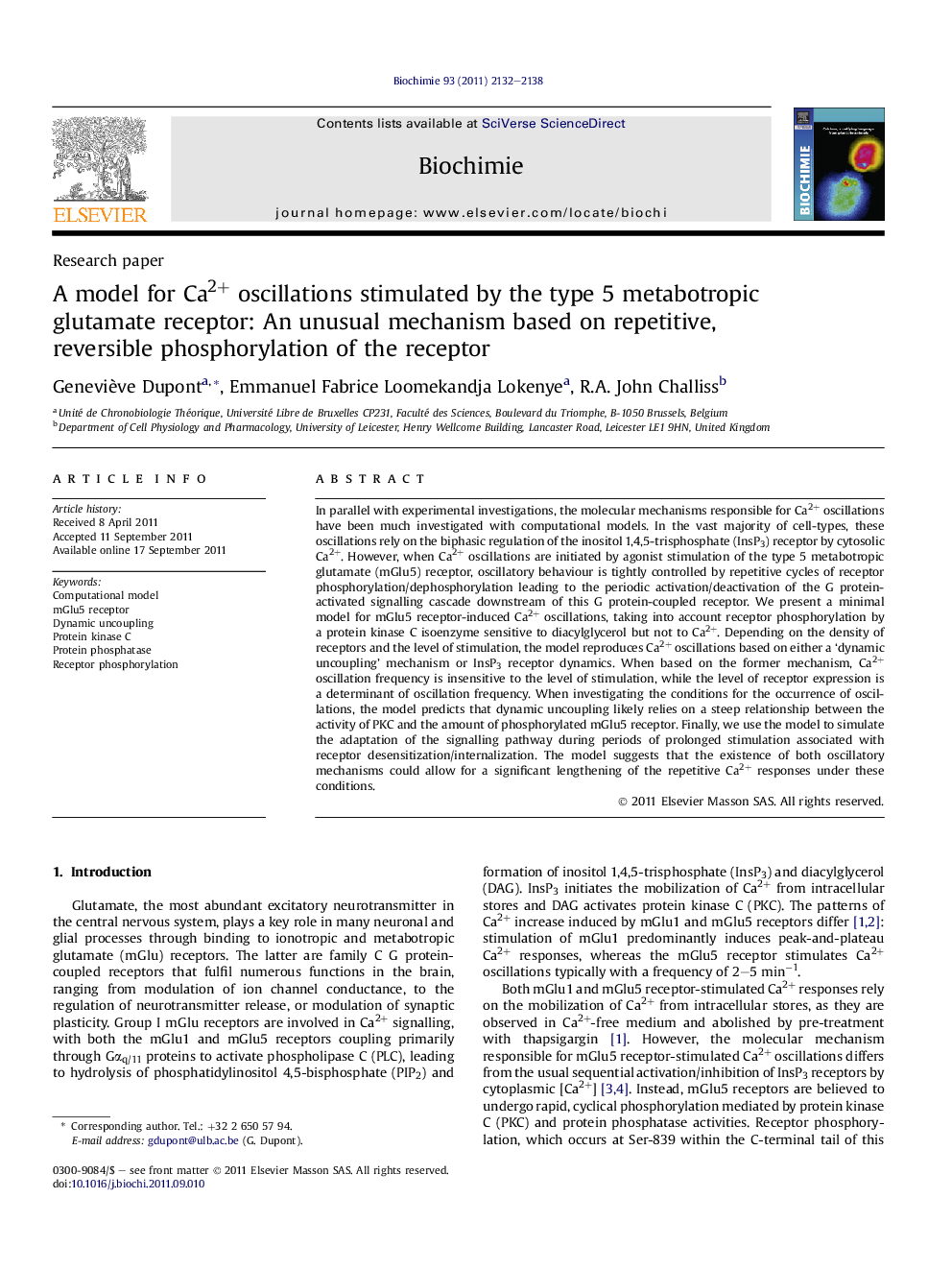| Article ID | Journal | Published Year | Pages | File Type |
|---|---|---|---|---|
| 1952209 | Biochimie | 2011 | 7 Pages |
In parallel with experimental investigations, the molecular mechanisms responsible for Ca2+ oscillations have been much investigated with computational models. In the vast majority of cell-types, these oscillations rely on the biphasic regulation of the inositol 1,4,5-trisphosphate (InsP3) receptor by cytosolic Ca2+. However, when Ca2+ oscillations are initiated by agonist stimulation of the type 5 metabotropic glutamate (mGlu5) receptor, oscillatory behaviour is tightly controlled by repetitive cycles of receptor phosphorylation/dephosphorylation leading to the periodic activation/deactivation of the G protein-activated signalling cascade downstream of this G protein-coupled receptor. We present a minimal model for mGlu5 receptor-induced Ca2+ oscillations, taking into account receptor phosphorylation by a protein kinase C isoenzyme sensitive to diacylglycerol but not to Ca2+. Depending on the density of receptors and the level of stimulation, the model reproduces Ca2+ oscillations based on either a ‘dynamic uncoupling’ mechanism or InsP3 receptor dynamics. When based on the former mechanism, Ca2+ oscillation frequency is insensitive to the level of stimulation, while the level of receptor expression is a determinant of oscillation frequency. When investigating the conditions for the occurrence of oscillations, the model predicts that dynamic uncoupling likely relies on a steep relationship between the activity of PKC and the amount of phosphorylated mGlu5 receptor. Finally, we use the model to simulate the adaptation of the signalling pathway during periods of prolonged stimulation associated with receptor desensitization/internalization. The model suggests that the existence of both oscillatory mechanisms could allow for a significant lengthening of the repetitive Ca2+ responses under these conditions.
► We develop a minimal model for Ca2+ oscillations based on mGlu5 receptor stimulation. ► Main properties of these oscillations are reproduced when nPKC is considered. ► Model predicts that oscillations rely on a highly sensitive pathway between receptor and PKC. ► Model predicts an extended range of oscillatory behaviour for mGlu5 receptor-based oscillations.
